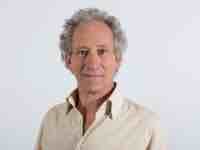CHILDES Jamaican Creole De Lisser Corpus

|
Tamirand De Lisser
Linguistics
University of Geneva
tamira_de_lissa@yahoo.com
website
|

|
Stephanie Durrleman
Linguistics
University of Geneva
stephanie.durrleman@unige.ch
|

|
Luigi Rizzi
Linguistics
University of Geneva
luigi.rizzi@unige.ch
|

|
Ur Shlonsky
Linguistics
University of Geneva
ur.shlonsky@unige.ch
|
| Participants: | 2 |
| Type of Study: | longitudinal |
| Location: | Jamaica |
| Media type: | audio |
| DOI: | doi:10.21415/HRG0-JT87 |
De Lisser, T. (2015). The acquisition of Jamaican Creole: The emergence
and transformation of early syntactic systems. Doctoral Thesis:
Université de Genève. http://archive-ouverte.unige.ch/unige:74228
De Lisser, T., S. Durrleman, U. Shlonsky, L. Rizzi, (2017). The
Acquisition of Tense, Modal and Aspect Markers in Jamaican Creole.
Journal of Child Language and Development. Vol: 5 Issue: 4 219-255.
De Lisser, T., S. Durrleman, L. Rizzi & U. Shlonsky. (2016). ‘The
Acquisition of Jamaican Creole: Null Subject Phenomenon’. Language
Acquisition: A Journal of Developmental Linguistics.
DOI:10.1080/10489223.2015.1115049
http://www.tandfonline.com/eprint/hD342B5SrGjCYhnj3EwQ/full
De Lisser, T., S. Durrleman, L. Rizzi & U. Shlonsky. (2014). ‘The
Acquisition of Jamaican Creole: A Research Project’. Rivista di
Grammatica Generativa. Volume 36: 83 – 101.
Publications based on these data should cite one of the above articles.
Project Description
This corpus documents longitudinal, spontaneous production of Jamaican
Creole (JC) by six monolingual basilectal Jamaican children, age ranging
from 18 to 23 months at the beginning of recordings, for a period of 18
months. Currently, the corpus includes only 2 of the 6.
All participants were strategically chosen from households where
Jamaican Creole was predominantly spoken. Each child was recorded every
10 days in separate 60 minutes sessions, for the initial five months,
and subsequently approximately every 15 days for the remaining duration
of the data collection phase of the project. The database contains a
total of 204 hours of recordings, which does not include the first two
months when selection and familiarization processes were still underway.
The research project is detailed in De Lisser et al. (2014). The current
corpus contains audio files and transcripts of two of the children, TYA
and SHU, totaling 62 hours of recording.
Tyanna (age range: 1;9,18 – 3;2,15): TYA lived in the community of
Roundhill with her parents and two siblings. Her mother was a housewife
while her father was a taxi-driver. Her immediate neighbours were her
grandmother, aunts and cousins. She had an MLU of 1.22 at 23 month and
4.86 at 38 months. She started school at 35 months; at this point we saw
a very rapid development in her speech, moving from an MLU of 2.16 at 34
months of age to a high of 5.38 at 37 months. Her recordings were
conducted mainly in the comfort of her home. The corpus in its current
release contains two recordings per month and corresponding transcripts
from age 1;11,25 to 3;2,15.
Shulae (age range: 1;11,25 – 3;4,13): SHU is the eldest participant in
the research project. She had an MLU of 2.88 at 25 months and 5.02 at 40
months. She lived in the community of Back Flagaman with her mother and
her brother and enjoyed a visiting relationship with her father and his
family who lived just a few meters away. She was the only child for her
father. After the passing of her father at 28 months, she lived with her
paternal grandparents, aunt and uncle, and then had a visiting
relationship with her mother. Her mother was generally unemployed but
worked occasionally as a store clerk. Her grandfather operated a shop
and her grandmother was a housewife. She started school at 33 months of
age. Recordings were conducted mainly at the home of her mother or
paternal grandparents, and on a few occasions at the home of her
maternal grandmother. The corpus in its current release contains two
recordings per month and corresponding transcripts from age 2;1,23 to
3;4,13.
For all transcriptions in this corpus, the JLU (Jamaica Language Unit)
modified Cassidy-LePage orthography was employed. This is a system that
represents the sounds of JC as faithfully as possible, without relying
on the spelling conventions of English. This system has no silent
letters and there is a one-to-one mapping of sound to symbol therefore
each letter or letter combination is always pronounced the same way
(http://www.jumieka.com/aatagrafi.html).
All data were transcribed in CHAT (Codes for the Human Analysis of
Transcripts) format, following the standard guidelines of the CHILDES
(Child Language Data Exchange System) Database. However, for clarity,
most of the codes were not used. Coding entails analyzing the
transcriptions and making notes of the grammatical and syntactic
phenomena. This is done by creating a one-to-one correspondence between
utterances and standard morpho-syntactic codes on a word-by-word basis
on the %xmor line. The list of codes is given
in this file .
Based on the time frame for the completion of the research project, a
decision was taken to code only the utterances of the target children.
Based on the non-standard conventions in transcribing JC, coding of the
data had to be done manually. A list of codes was developed for
conveying the morpho-syntactic relations (see below). Lexical item
which could lead to different interpretations or yield different codes
in the same context, were verified via the use of native speakers’
judgments where applicable or coded as unknown. The data was also coded
for null elements in the grammar.
Acknowledgment
This research was funded by the Swiss National Science Foundation grant 100015_131793/1.



